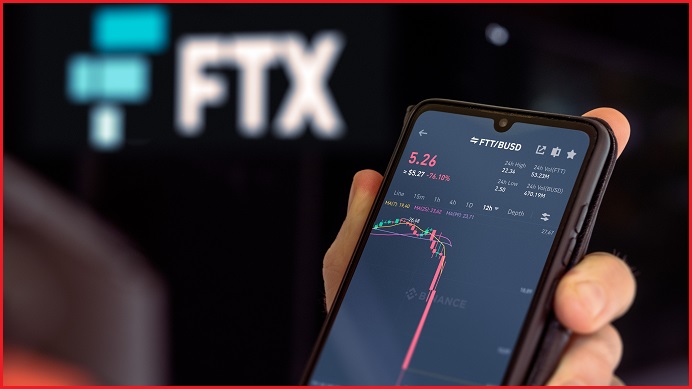Just 10 days ago, cryptocurrency exchange FTX was the second largest in the world and its founder Sam Bankman-Fried was seen as a genius poster child for the crypto world – now the company is worthless and Bankman-Fried is on the run from law enforcement and creditors.
The dramatic collapse of FTX has sent shockwaves throughout the cryptocurrency world.
Because of its size and immense venture capital backing – FTX had been valued at $47 billion (US$32 billion) in January – FTX was seen as a safe place to store and trade cryptocurrency.
After all, the company ran ads in the Super Bowl, had bought naming rights to a stadium in Miami, and was given tacit endorsement from media outlets who splashed its founder’s face on the cover of magazines.
Then, in early November, came a news story.
Coindesk reported on leaked financial documents from within FTX’s sister trading company Alameda Research – one of the biggest market movers in crypto.
The report pointed to Alameda’s $20 billion (US$14 billion) of declared assets as of 30 June 2022 which contained large billion-dollar chunks of FTT – a token made and controlled by FTX to give users discounts on its exchange.
Alameda then used its FTT as collateral to take out loans from FTX.
Having so much of its assets tied up in a token created by FTX raised a few eyebrows, including those of Changpeng Zhao, CEO of Binance, by far the world’s largest cryptocurrency exchange.
A few days after the Coindesk report, he tweeted that Binance – which was an investor in FTX and had received a large portion of FTT when it sold its equity share – was going to sell its $3.1 billion (US$2.1 billion) worth of the tokens.
“Due to recent revelations that have came to light, we have decided to liquidate any remaining FTT on our books,” Zhao tweeted.
“We will try to do so in a way that minimises market impact.”
Major market impact
People had already begun taking their crypto out of FTX and selling their FTT, tanking its price.
In just one day, more than $7.4 billion (US$5 billion) worth of crypto had been withdrawn from the exchange, prompting Bankman-Fried to tweet that FTX’s client assets “are fine” and the company had “enough to cover all client holdings”. He deleted the tweets soon after.
Zhao returned to say Binance would step in to save FTX by buying it, but the exchange soon backed away from the deal.
"As a result of corporate due diligence, as well as the latest news reports regarding mishandled customer funds and alleged US agency investigations, we have decided that we will not pursue the potential acquisition of http://FTX.com," Zhao tweeted.
"In the beginning, our hope was to be able to support FTX’s customers to provide liquidity, but the issues are beyond our control or ability to help."
FTX continue searched around for liquidity to stay afloat, unsuccessfully looking for investors to buy a seat on its sinking ship, but there were no takers.
FTX was on its own.
Soon it paused withdrawals, except of course for clients in the Bahamas where, unsurprisingly, FTX is headquartered and Bankman-Fried lives.
FTX cited local regulations stipulating it prioritise the withdrawal of Bahamian money. The regulators denied this was the case.
In the early hours of Saturday morning, FTX declared bankruptcy.
The next day, some users noticed their accounts were showing zeroed-out balances.
Official word was that the exchange had been coincidentally hacked immediately after bankruptcy.
FTX was consolidating its remaining crypto into cold storage (offline) wallets when the hack took place.
The aftermath
In the days since FTX’s spectacular fall, reports have emerged showing an almost comical level of financial mismanagement.
A balance sheet from just before the collapse was leaked to the Financial Times and showed FTX had less than $1.5 billion (US$1 billion) in liquidity against its $13.4 billion ($9 billion) of liabilities.
One line referenced a missing $11.9 billion ($8 billion) in a “hidden, poorly internally labled [sic] ‘fiat@’ account”.
The balance sheet showed FTX held no Bitcoin as assets but over $1.5 billion (US$1 billion) worth of them on its liabilities, while it also reported holding $3.3 billion (US$2.2 billion) in Serum – another Bankman-Fried project – which by the end of the week had a market capitalisation in just the tens of millions.
Reuters reported that at least $1.5 billion (US$1 billion) worth of customer crypto had simply disappeared from among the $14.9 billion (US$10 billion) loaned to Alameda.
Bankman-Fried allegedly had access to a “backdoor” which let him directly access the company’s books without triggering alerts to compliance officers or external auditors.
In its bankruptcy filings, FTX said it had liabilities between $14.9 billion (US$10 billion) and $74.6 billion (US$50 billion) to more than 100,000 creditors – the largest amount you can select on the form is “more than 100,000”.
Of those creditors, at least 30,000 are Australians who hope administrators will help them gain back some of their frozen crypto.
A parliamentary committee last year recommended the government introduce requirements that custodial cryptocurrency exchanges store Australian customer funds locally to minimise the impact of international liquidity crunches.
Centralised cryptocurrency exchanges like Crypto[dot]com are now fearing similar bank runs to FTX as customers withdraw their crypto in droves.










